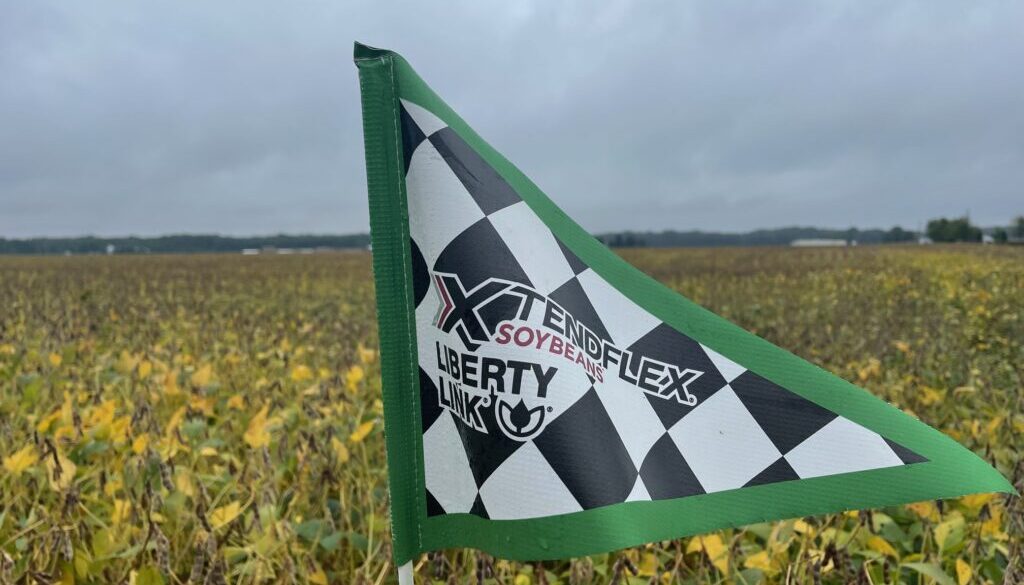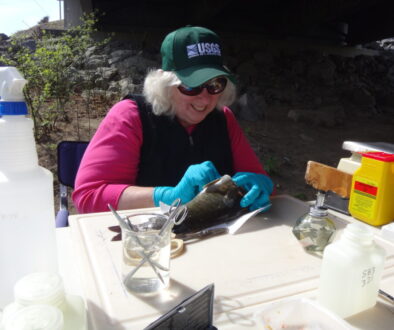Bayer asks EPA to again approve twice-banned weed killer
After multiple court-ordered bans, Bayer AG is once again asking the US Environmental Protection Agency (EPA) to approve the controversial weed killer dicamba for use on genetically modified crops, the EPA announced this week.
Dicamba has been responsible for millions of acres of damage to crops and natural areas since it was initially approved to be used starting in 2017 on genetically modified (GM) crops altered to withstand being sprayed with the herbicide. Farmers whose crops were not genetically modified suffered the damage, largely because the new uses for dicamba induced farmers to apply it during summer months when the chemical easily volatilized and drifted far from where it was applied.
Before the new use approvals, dicamba was primarily used before the growing season because of its volatility. But after the EPA agreed to industry requests to market dicamba herbicides to farmers for use during warm months on the specialized GM crops, farmers not planting the dicamba-tolerant GM crops registered thousands of complaints across multiple key farming states about dicamba damage.
In its request for fresh approval, Bayer, the German conglomerate that inherited dicamba in its 2018 acquisition of Monsanto, is now asking the EPA for more limits on the weed killer. Bayer is proposing, for example, that dicamba use be not allowed after soybean crops have emerged from the ground or after June 12. However, Bayer’s proposal still allows for cotton to be allowed throughout the summer. The proposal also limits the overall amount of dicamba allowed to be used, compared to previous EPA approvals.
The EPA is asking for public input on the proposal, which comes despite a federal court banning the weed killer’s use for the second time earlier this year. The EPA said it will take public comments on the issue until June 3.
“It’s kind of like window dressing. They have a few minor proposed changes they’ve put in place, but nothing is going to measurably impact the amount of harm coming from dicamba,” said Nathan Donley, environmental health science director at the Center for Biological Diversity. The center, as well as other conservation nonprofits, have twice successfully sued the EPA for illegally approving dicamba.
In February, U.S. District Court Judge David Bury banned dicamba, ruling that the EPA unlawfully approved dicamba in 2020 because it did not properly post the proposal for public comment. Bury wrote in his opinion that the EPA denied thousands of farmers and other people who have been harmed from commenting, which likely would have substantially impacted EPA’s decision to reapprove dicamba. Neither the EPA nor pesticide companies appealed that decision.
The EPA allowed the continued use of dicamba throughout the 2024 growing season since farmers have already purchased their cropping systems for the year.
The controversial weedkiller was also banned in 2020, after a federal court ruled that the EPA downplayed the risks of dicamba.
Prior to GM crops, dicamba was never widely used during warm months because it was well known that the chemical can volatilize and move long distances when temperatures climb. Volatilization is when dicamba particles turn from a liquid to a gas in the hours or days after the herbicide is applied, effectively turning into clouds of weed killer and causing landscape level damage.
Dicamba is also prone to drifting on the wind far from where it is applied; as well, it can move into drainage ditches and bodies of water as runoff during rain events.
Monsanto, along with the chemical giant BASF, introduced new formulations of dicamba herbicides they said would not be as volatile, and they encouraged farmers to buy Monsanto’s newly created dicamba-tolerant crops. Farmers buying the specialized seeds could spray dicamba on fields while the crops were growing, killing the weeds, but not the precious commodities.
The system mirrored the “Roundup Ready” system of glyphosate-based herbicides Monsanto had long sold farmers to be used in conjunction with glyphosate-tolerant corn, soybeans and other genetically modified crops. As glyphosate lost effectiveness, farmers could use dicamba to tackle stubbornly resistant weeds, the companies pledged.
Despite this, Monsanto and BASF predicted that thousands of farmers would be harmed by dicamba drift, and thought it would spur sales of the dicamba-tolerant system, according to internal documents from court filings.
Dicamba-resistant crops have been planted on as many as 65 million acres, the EPA estimated, an area larger than the state of Oregon.
 EWG
EWG



May 9, 2024 @ 8:35 am
My chestnut and pawpaw orchard in Iowa has been damaged by dicamba even after it was promised that the new formulation would put and end to that issue. I have the documentation from the pesticide beareau to prove it.
Also, I’ve witnessed oak tatters and other herbicide damage during walks and bike rides in forests near fields. Without a doubt, this is lowering forest productivity leading to fewer deer and turkeys etc. This means fewer wildlife viewing and hunting opportunities.
It’s a disaster for everyone except the small minority making giant profits from its sale.
May 8, 2024 @ 10:03 am
When will Bayer/Monsanto just admit it’s a failed product?
Commodity farmers around us, while still using other Ag chemicals, won’t touch Dicamba because they know its a disaster waiting to happen.
May 6, 2024 @ 8:55 am
New restrictions on application timely and conditions has almost eliminated drift problems. Don’t comment on topics about which you are completely ignorant!!!
What’s next? The evils of vaccinations?
May 6, 2024 @ 7:28 am
I just tried to share this article on my Facebook feed and it was blocked as spam. Big Ag strikes again! 🙁
May 6, 2024 @ 2:21 pm
That is strange, and unfortunate. We will check into that!